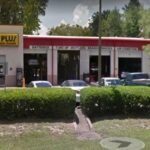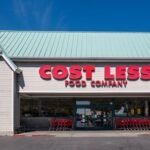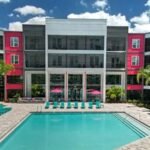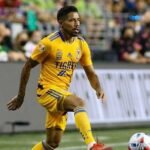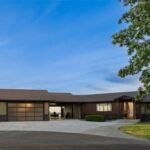Across many urban landscapes, streets like w mlk blvd and bill robertson ln hold special meaning for their communities. W MLK Blvd, often named in honor of Dr. Martin Luther King Jr., symbolizes progress, unity, and civil rights, while Bill Robertson Ln commemorates a local leader known for community service and advocacy. Together, these roads not only serve as critical transportation corridors but also as cultural landmarks that reflect the evolving spirit and heritage of the neighborhoods they traverse.
W MLK Blvd and Bill Robertson Ln: Historical and Community Insights
Historical Context and Significance
W MLK Blvd is a name that resonates in cities across the country, representing the enduring legacy of Dr. Martin Luther King Jr. It is more than just a roadway—it is a living tribute to the civil rights movement and a reminder of the ongoing struggle for equality and justice. Alongside this iconic boulevard, Bill Robertson Ln has emerged as a vital local artery named after a respected community figure whose contributions have significantly shaped local development and civic engagement.
Over the decades, these roads have witnessed transformative changes. Historic neighborhoods along W MLK Blvd have evolved, blending rich cultural traditions with modern urban renewal. Bill Robertson Ln, often quieter but equally significant, has become synonymous with community resilience and local enterprise, reflecting the grassroots efforts that help bind neighborhoods together.
Modern Developments and Community Impact
Recent revitalization initiatives have focused on enhancing public spaces, improving pedestrian safety, and supporting local businesses along these corridors. Key developments include:
- Urban Revitalization Projects: Investments in infrastructure and beautification projects have transformed areas along W MLK Blvd, with new parks, art installations, and improved transit access encouraging community interaction.
- Economic Growth: Bill Robertson Ln has seen a rise in boutique shops, community centers, and local eateries, contributing to a vibrant local economy and providing platforms for small business growth.
- Cultural Celebrations: Both thoroughfares serve as venues for cultural events, festivals, and public gatherings that celebrate the unique heritage of the communities they serve.
These initiatives have not only improved the physical landscape but also strengthened community bonds by fostering environments where history, culture, and modern development intersect.
Future Prospects and Urban Planning
Looking ahead, urban planners and community leaders are working together to ensure that W MLK Blvd and Bill Robertson Ln continue to thrive as dynamic public spaces. Future projects aim to:
- Enhance connectivity with improved public transit links.
- Introduce sustainable design features that reduce environmental impact.
- Expand community programs that highlight local history and foster social cohesion.
These efforts underscore a commitment to preserving the legacy of these roads while adapting to the evolving needs of modern urban life.
Frequently Asked Questions (FAQs)
-
What is the historical significance of W MLK Blvd?
W MLK Blvd is typically named in honor of Dr. Martin Luther King Jr., symbolizing the civil rights movement and the ongoing fight for equality. It serves as a cultural and historical landmark in many cities, representing progress and community unity. -
Who was Bill Robertson, and why is there a Bill Robertson Ln?
Bill Robertson was a respected local leader known for his contributions to community development and civic engagement. Bill Robertson Ln commemorates his legacy, serving as a reminder of his efforts to improve local neighborhoods and foster community spirit. -
How have urban revitalization efforts impacted these areas?
Recent urban revitalization projects along W MLK Blvd and Bill Robertson Ln have led to improved public spaces, increased pedestrian safety, and enhanced local economies through new businesses and cultural initiatives. These efforts have helped preserve the historical essence while promoting modern development. -
What future developments are planned for these thoroughfares?
Future plans include better connectivity via public transit, sustainable urban design features, and expanded community programming that celebrates local heritage. These initiatives aim to balance growth with the preservation of cultural identity. -
Where can I learn more about the developments along W MLK Blvd and Bill Robertson Ln?
Local government websites, community organizations, and urban planning departments are excellent sources of information on ongoing and future projects. Additionally, local news outlets and community blogs frequently cover updates and events related to these areas.
Conclusion
The w mlk blvd and bill robertson ln corridors are more than just roads; they are dynamic symbols of historical legacy, community resilience, and urban renewal. As these thoroughfares continue to evolve through strategic investments and community-driven projects, they offer inspiring examples of how local history and modern development can coexist harmoniously. Whether you’re a local resident, history enthusiast, or urban planning professional, these streets offer a fascinating glimpse into the past and a promising vision for the future.


